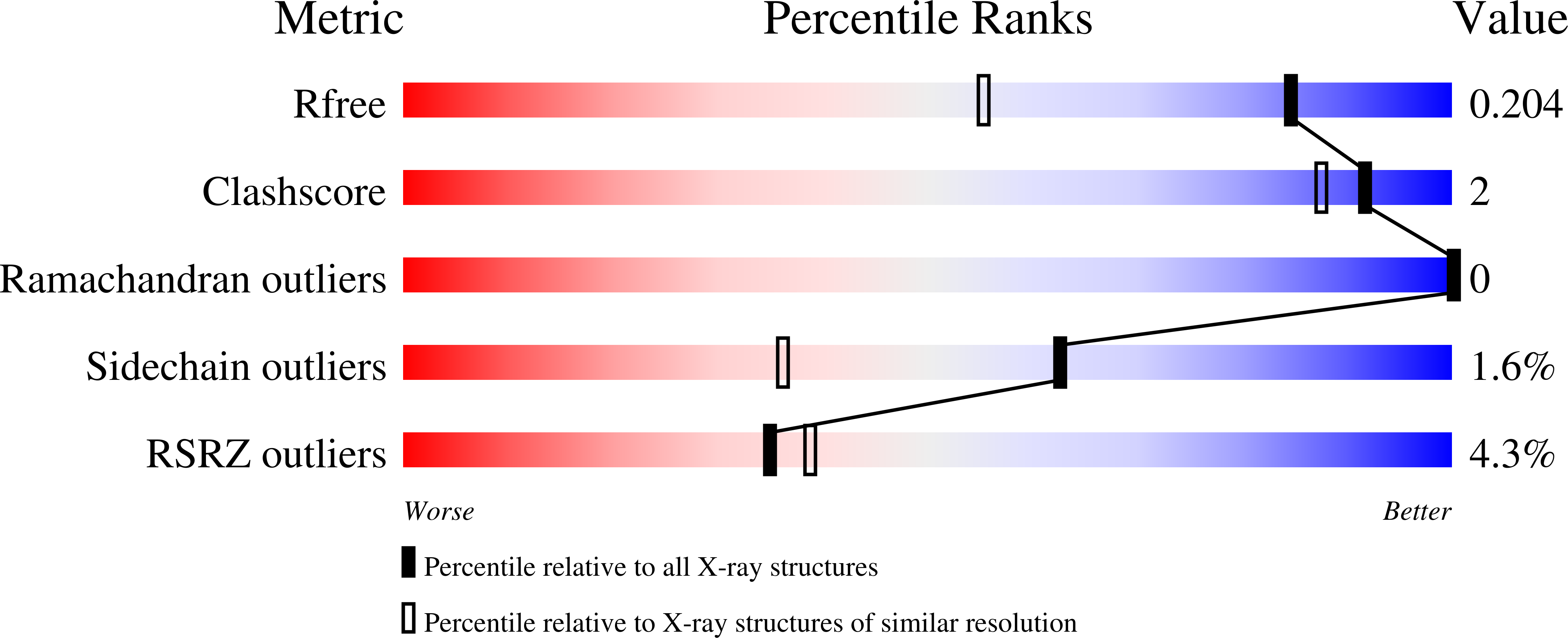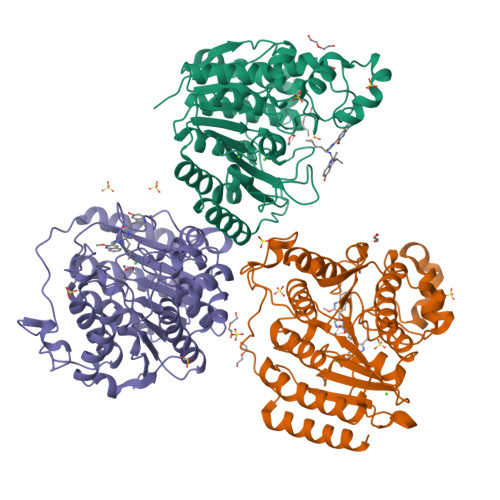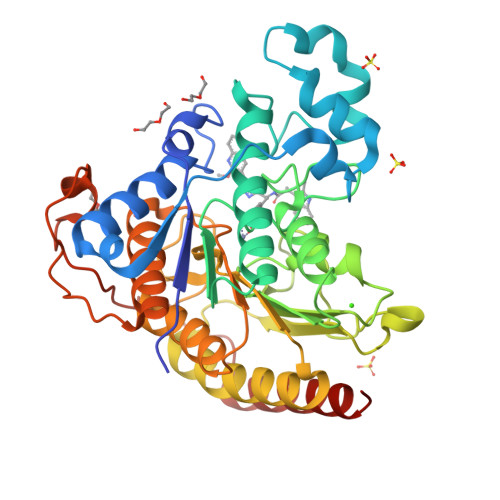Redefining the Histone Deacetylase Inhibitor Pharmacophore: High Potency with No Zinc Cofactor Interaction.
Beshore, D.C., Adam, G.C., Barnard, R.J.O., Burlein, C., Gallicchio, S.N., Holloway, M.K., Krosky, D., Lemaire, W., Myers, R.W., Patel, S., Plotkin, M.A., Powell, D.A., Rada, V., Cox, C.D., Coleman, P.J., Klein, D.J., Wolkenberg, S.E.(2021) ACS Med Chem Lett 12: 540-547
- PubMed: 33854701
- DOI: https://doi.org/10.1021/acsmedchemlett.1c00074
- Primary Citation of Related Structures:
7LTG, 7LTK, 7LTL - PubMed Abstract:
A novel series of histone deacetylase (HDAC) inhibitors lacking a zinc-binding moiety has been developed and described herein. HDAC isozyme profiling and kinetic studies indicate that these inhibitors display a selectivity preference for HDACs 1, 2, 3, 10, and 11 via a rapid equilibrium mechanism, and crystal structures with HDAC2 confirm that these inhibitors do not interact with the catalytic zinc. The compounds are nonmutagenic and devoid of electrophilic and mutagenic structural elements and exhibit off-target profiles that are promising for further optimization. The efficacy of this new class in biochemical and cell-based assays is comparable to the marketed HDAC inhibitors belinostat and vorinostat. These results demonstrate that the long-standing pharmacophore model of HDAC inhibitors requiring a metal binding motif should be revised and offers a distinct class of HDAC inhibitors.
Organizational Affiliation:
MRL, Merck & Co., Inc., Kenilworth, New Jersey 07033, United States.


























